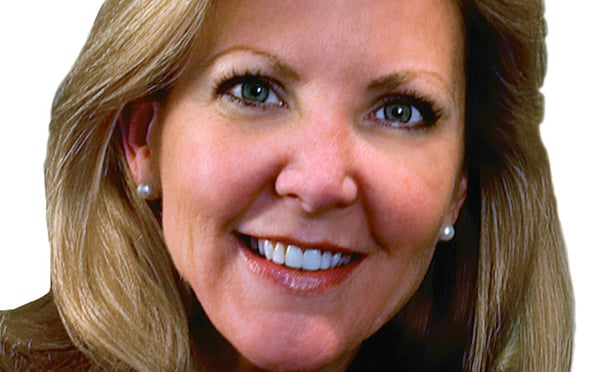
NEW YORK CITY—The legal sector has reached $287 billion in US annual revenue. This is more gross revenue than Amazon and Google combined. In real estate leasing, New York City is the largest law firm market in the country, followed by Washington, DC, at a close second.
That's why Cushman & Wakefield expanded their legal advisory group to 350 brokers. Six years ago, the real estate firm dedicated substantial resources to boost the group's research and analysis work evaluating the real estate component of the business of law.
For the last three years, Cushman & Wakefield has surveyed 750 law firm associates, who confidentially responded. Fifty percent are from the AM Law 100 list. (GlobeSt.com's sister publication, The American Lawyer, publishes an annual national ranking of the top 100 law firms based on financial performance. Twenty-five of these are headquartered in New York.) This type of information helps Cushman advise firms on both immediate needs and long-term succession planning.
GlobeSt.com interviewed Cushman & Wakefield's executive managing director and head of the legal advisory group, Sherry Cushman; and executive vice chairman and chairman of the tenant advisory group, Dale Schlather, to learn more about the latest trends in New York law firm office leasing.
Cushman has advised law firm tenants for more than 30 years and has witnessed major shifts in standard practices. The days of unlimited billable hours have been replaced with competitive fee structures and fixed fee billing. Like other corporations, law firms are now being pushed to maintain profits and to control overhead.
Rising expenses and shrinking fees are driving changes in real estate decisions. The greatest expense of law firms is salaries, followed by real estate and then technology. With tech costs soaring, even with record-breaking revenue, law firms have massive expenses. “So they are really looking to real estate to cut costs,” says Cushman.
Law firms are also using real estate to help provide services, upgrade technology and create more collaborative environments. “They are putting more space into the 'we space' and less into the 'me space,'” says Cushman. This means office sizes are shrinking but common areas are growing.
“People are getting out from behind closed doors and interacting more, generating more business together and supporting the whole firm versus the individuals or individual practices,” says Cushman. “It's a real shift.”

Schlather, who also has worked at Cushman for more than 30 years, says the company tracks the nearly 34 million square feet of office space occupied by law firms in New York City. He says this amounts to approximately 11.8% of the rentable gross square footage in Manhattan commercial real estate. Law firms sign lease terms for approximately 15 years. However, Schlather notes firms tend to remain in their locations for 30 or 40 years.
Because of technology law firms need less space. One secretary typically used to work for two or three lawyers. Now pools of secretaries often provide one secretary per seven or eight lawyers. “They don't need all those secretarial stations. They don't need libraries. They don't need as many rooms,” says Schlather.
A hot topic on people's minds is whether Big Law will move to the newest offices being built at Hudson Yards. Currently, Midtown has the highest concentration of the legal sector but the buildings are an average of 60 years old. Cushman points to law firms Milbank, Tweed, Hadley & McCoy; Skadden, Arps, Slate, Meagher & Flom; and Boies, Schiller & Flexner, which will all relocate to Hudson Yards.
The days where partners made all of the business decisions have passed for many firms. The global real estate director of Skadden came from Blackrock. BakerHostetler's CFO previously worked at Ernst & Young. Non-attorney executive leaders offer expertise from other industries and often help make the decisions regarding location and office leases.

Cushman says even though rental rates will be higher, law firms can create savings with space efficiencies. Older buildings having poorly designed floor plates, columns, dark interiors and outdated features can result in astronomically expensive renovations. “It's about how the rent combined with the efficiency factors and then the out-of-pocket capital to build these spaces will affect the cost to sit an attorney in the space for 15 years,” says Cushman.
She notes Skadden currently provides more than 1,000 square feet per attorney, which significantly will be reduced with the office's higher rent at Hudson Yards. However, the new office with all of it state-of-the-art amenities is considered by some a necessity to recruit and maintain top talent.
Want to continue reading?
Become a Free ALM Digital Reader.
Once you are an ALM Digital Member, you’ll receive:
- Breaking commercial real estate news and analysis, on-site and via our newsletters and custom alerts
- Educational webcasts, white papers, and ebooks from industry thought leaders
- Critical coverage of the property casualty insurance and financial advisory markets on our other ALM sites, PropertyCasualty360 and ThinkAdvisor
Already have an account? Sign In Now
*May exclude premium content© 2024 ALM Global, LLC, All Rights Reserved. Request academic re-use from www.copyright.com. All other uses, submit a request to [email protected]. For more information visit Asset & Logo Licensing.








